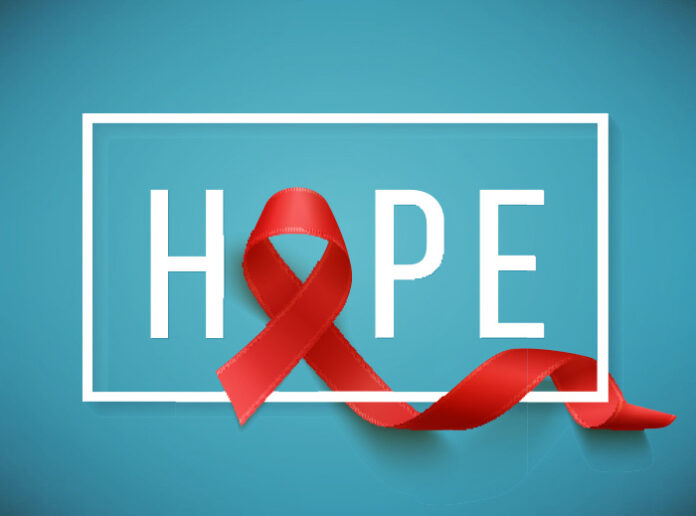Une nouvelle étude montre un deuxième cas de rémission réussie du VIH après une greffe de moelle osseuse
Au moins un million de personnes meurent chaque année de causes liées au VIH et près de 35 millions vivent avec HIV. Le VIH-1 (virus de l'immunodéficience humaine) est responsable de la majorité des infections à VIH dans le monde et se transmet par contact direct avec les fluides corporels infectés par le VIH. Le virus attaque et tue les cellules cruciales de notre système immunitaire pour combattre les infections. Il n'y a pas de remède contre le VIH. Actuellement, le VIH ne peut être traité qu'à l'aide de médicaments capables de supprimer le VIH. virus. These drugs have to be taken life long and it is challenging plus a cost burden on the health system especially in low-and-middle-income countries. Only 59 percent of patients of HIV worldwide are receiving Antiretroviral therapy (ARV) and HIV virus is fast becoming resistant from many known drugs which itself is a major concern.
Transplantation de moelle osseuse (BMT) is a treatment used for leukemia, myeloma, lymphoma etc. Bone marrow, the soft tissue inside bones, makes blood-forming cells including the infection fighting white blood cells. A bone marrow transplant replaces unhealthy marrow with a healthy one. In the first case of successful HIV remission, an HIV-infected individual called ‘Berlin Patient’ who later revealed his name received a bone marrow transplant a decade ago when he was targeted to treat acute leukemia. He received two transplants along with total body irradiation which led to long-term HIV remise.
Dans une nouvelle étude publiée dans Nature led by UCL and Imperial College London, the only second person has been shown to experience sustained remission from HIV-1 after a bone marrow transplant and stoppage of treatment. The anonymous adult male patient from UK was diagnosed with HIV infection in 2003 and was on antiretroviral therapy treatment since 2012. He was subsequently diagnosed with Hodgkin’s Lymphoma in the same year and he underwent chemotherapy. In 2016, he was given stem cell transplant from a donor who carried a genetic mutation which prevents expression of a most commonly used HIV receptor protein called CCR5. Such a donor is resistant to HIV-1 strain of the virus which specifically uses CCR5 receptor and thus the virus now cannot enter host cells. Since chemotherapy kills cells which are dividing, HIV could be targeted. From this understanding if one’s immune cells are replaced by cells which do not have CCR5 receptor, HIV can be prevented from rebounding after the treatment.
La greffe a été réalisée avec des effets secondaires mineurs comme une complication bénigne courante dans les greffes dans lesquelles les cellules immunitaires du receveur sont attaquées par les cellules immunitaires du donneur. Le traitement antirétroviral a été poursuivi pendant 16 mois après la greffe avant de prendre la décision d'arrêter le traitement afin d'évaluer la rémission du VIH-1. Après cela, la charge virale du patient a continué à rester indétectable. Le patient est resté en rémission après 18 mois après l'interruption du traitement antirétroviral, car les cellules immunitaires du patient n'étaient pas capables de produire le récepteur CCR5 crucial. Cette durée totale est égale à 35 mois après la transplantation.
This is a second case of a patient exhibiting sustained remission of HIV-1 following a bone marrow transplant. One important difference in this second patient being that ‘Berlin Patient’ had received two transplants along with total body irradiation while this UK patient received only a single transplant and underwent less aggressive and lesser toxic approach of chemotherapy. Mild complications of similar nature were seen in both patients i.e. graft versus host disease. Achieving success in two different patients points towards developing strategies based on preventing CCR5 expression which might even cure HIV.
Authors state that they are monitoring the patient’s condition and cannot say with affirmation yet if he has been cured of HIV. This may not be a generalized appropriate treatment for HIV because of adverse effects and toxicity of chemotherapy. Also, bone-marrow transplants are expensive and carry risks. Nevertheless, it is a better approach with reduced intensity conditioning and no irradiation. Research could also focus on knocking out the CCR5 receptor using gene therapy in people with HIV.
***
{Vous pouvez lire le document de recherche original en cliquant sur le lien DOI ci-dessous dans la liste des sources citées}
Sources)
1. Gupta RK et al. 2019. Rémission du VIH-1 après transplantation de cellules souches hématopoïétiques CCR5Δ32/Δ32. La nature. http://dx.doi.org/10.1038/s41586-019-1027-4
2. Hütter G. et al. 2009. Contrôle à long terme du VIH par greffe de cellules souches CCR5 Delta32/Delta32. N Engl J Med. 360. https://doi.org/10.1056/NEJMoa0802905
3. Brown TR 2015. Je suis le patient de Berlin : une réflexion personnelle », Recherche sur le SIDA et rétrovirus humains. 31(1). https://doi.org/10.1089/aid.2014.0224






































